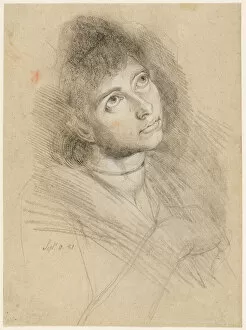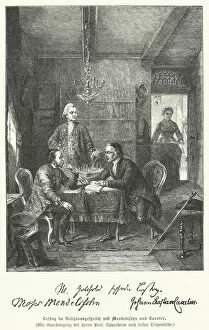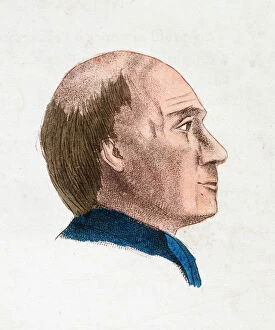Johann Kaspar Lavater Collection
Johann Kaspar Lavater: A Multifaceted Swiss Thinker Johann Kaspar Lavater, a prominent figure in the 18th-century intellectual scene
All Professionally Made to Order for Quick Shipping
Johann Kaspar Lavater: A Multifaceted Swiss Thinker Johann Kaspar Lavater, a prominent figure in the 18th-century intellectual scene, was much more than just a poet and philosopher. Born in Switzerland in 1741, Lavater's contributions spanned various fields including physiognomy and theology. His influence on the cultural landscape of his time is evident through numerous portraits and engravings that capture his essence. One such portrait is "Portrait of a Woman (Martha Hess)" by Henry Fuseli from 1781. This artwork showcases Lavater's ability to capture human emotions through facial expressions, an aspect central to his work as a physiognomist. The intensity with which he studied faces can also be seen in the colored engraving depicting him engaged in religious discussions with Moses Mendelssohn. Lavater's dedication to understanding human nature led him to write extensively on the subject. In "The Conjurors Magazine" published in 1792, we see how he delved into mystical practices while exploring the depths of spirituality. These writings not only showcased his philosophical prowess but also highlighted his role as a dramatist. His commitment to knowledge extended beyond theoretical pursuits; it manifested itself within the walls of his study where he spent countless hours immersed in research and contemplation. Engravings capturing this intimate setting give us glimpses into Lavater's world - one filled with books, manuscripts, and an insatiable thirst for wisdom. Throughout his life, Johann Kaspar Lavater remained dedicated to sharing his insights with others. He opened up his home as a hub for intellectual discourse and welcomed visitors eager to engage with him on matters ranging from literature to theology. These interactions are beautifully depicted in engravings showcasing Lavater at home surrounded by fellow thinkers who sought enlightenment through conversation. Perhaps one of the most iconic portrayals of the engraving by William Blake from 1787.



























